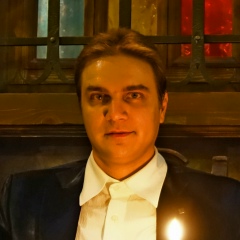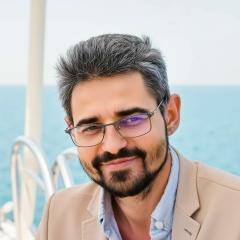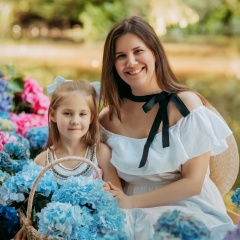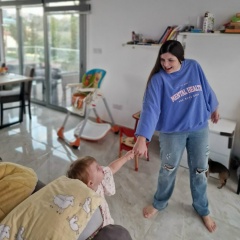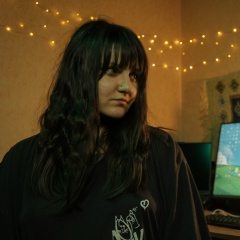Тбилиси день второй. Part 1. Мы проснулись под шум дождя - прогноз сбывался. У меня была заказана обзорная индивидуальная экскурсия по городу. Для тех, кто планирует поездку, могу сказать, что стоящие (в смысле интересные) гиды на tripster забронированы на 2-3 недели вперёд, так что если хотите инфы - озадачьтесь заранее. Я люблю, когда мне рассказывают-вариант ходить с путеводителем не рассматривался. Мы стартовали с площади Свободы, которая за время своего существования носила имя Берии, святого Георгия и даже дров (сюда свозили дрова на продажу). Площадь украшает скульптура Георгия победоносца, произведённая на свет усилиями Церетели. смотрится органично! Георгий интересен в контексте того, что название страны с ним связано напрямую. Христианство в Грузию привнесла святая Нино, которая находилась с Георгием в родстве. Имя Георгий у персов произносилось как Гюрдис, у византийцев - Гюргиос (отсюда целых два имени: Юрий и Георгий). Вторая версия этимологии слова гласит, что персы, постоянно воевавшие с Грузией, называли этот народ гурги - волки. Волк означал враг, затем буквы перепугались, и мы получили Грузию.
Возвращаясь к туристическому маршруту: мой вам совет-если хотите максимум за один раз, отправляйтесь по улице Пушкина. Она стартует с площади Свободы, открывается очень милым Пушкинским сквером. Александр Сергеевич был сослан в Тифлис в изгнание (хорошенькое дело!), отмечал тут юбилей, оторвался по-Питерски и был направлен на излечение в серные бани. О них позже.
Улицей Пушкина старательно занимался архитектор Кавлашвили, который принял волевое решение снабдить дома известными на весь мир балкончиками. Большинство из них в этой части города не априорные, а архитектора прозвали Балконским.
На противоположной стороне улицы (по ней лучше и шествовать) можно увидеть остатки крепостной стены, скульптуру фонарщика. О последней могу сказать, что ранее в Грузии была традиция: люди, у которых возникали проблемы, вставали под фонарь, и все сразу понимали, что им нужна помощь. Предлагаю всей страной пойти под фонари, но не втянуться в замес с фонарями Амстердама) Чуть дальше - скульптурная группа бродячих музыкантов. За ней театр Габриадзе, но о нем след.пост
Возвращаясь к туристическому маршруту: мой вам совет-если хотите максимум за один раз, отправляйтесь по улице Пушкина. Она стартует с площади Свободы, открывается очень милым Пушкинским сквером. Александр Сергеевич был сослан в Тифлис в изгнание (хорошенькое дело!), отмечал тут юбилей, оторвался по-Питерски и был направлен на излечение в серные бани. О них позже.
Улицей Пушкина старательно занимался архитектор Кавлашвили, который принял волевое решение снабдить дома известными на весь мир балкончиками. Большинство из них в этой части города не априорные, а архитектора прозвали Балконским.
На противоположной стороне улицы (по ней лучше и шествовать) можно увидеть остатки крепостной стены, скульптуру фонарщика. О последней могу сказать, что ранее в Грузии была традиция: люди, у которых возникали проблемы, вставали под фонарь, и все сразу понимали, что им нужна помощь. Предлагаю всей страной пойти под фонари, но не втянуться в замес с фонарями Амстердама) Чуть дальше - скульптурная группа бродячих музыкантов. За ней театр Габриадзе, но о нем след.пост
Tbilisi is the second day. Part 1. We woke up to the sound of rain - the forecast came true. I was ordered a private sightseeing tour of the city. For those planning a trip, I can say that the standing (in the sense of interesting) guides on the tripster are booked 2-3 weeks in advance, so if you want information, be puzzled in advance. I love when they tell me, the option of walking with a guide was not considered. We started from Freedom Square, which during its existence bore the name of Beria, St. George and even firewood (firewood was brought here for sale). The square is decorated with a sculpture of St. George the Victorious, brought to light by the efforts of Tsereteli. It looks organic! George is interesting in the context of the fact that the name of the country is directly connected with him. Christianity was brought to Georgia by St. Nino, who was related to George. The name George was pronounced as Gurdis among the Persians, and Gyurgios among the Byzantines (hence the whole two names: Yuri and George). The second version of the etymology of the word says that the Persians, who constantly fought with Georgia, were called this people by the gurgi - wolves. The wolf meant the enemy, then the letters got scared, and we got Georgia.
Returning to the tourist route: my advice is if you want a maximum at a time, go down Pushkin Street. It starts from Freedom Square, opens with a very nice Pushkin Square. Alexander Sergeevich was exiled to Tiflis (good thing!), Celebrated the anniversary here, broke off in St. Petersburg and was sent to cure in sulfur baths. About them later.
The architect Pushkin carefully worked on Pushkin Street, who made a strong-willed decision to provide balconies with world-famous houses. Most of them in this part of the city are not a priori, but the architect was called Balkonsky.
On the opposite side of the street (it is better to walk along it) you can see the remains of the fortress wall, a sculpture of a lamplighter. I can say about the latter that there was a tradition in Georgia earlier: people who had problems got up under the flashlight, and everyone immediately understood that they needed help. I suggest that the whole country go under the lanterns, but do not get involved in a batch with the lanterns of Amsterdam) A little further - a sculptural group of vagrant musicians. Behind her is the Gabriadze Theater, but about him the next post
Returning to the tourist route: my advice is if you want a maximum at a time, go down Pushkin Street. It starts from Freedom Square, opens with a very nice Pushkin Square. Alexander Sergeevich was exiled to Tiflis (good thing!), Celebrated the anniversary here, broke off in St. Petersburg and was sent to cure in sulfur baths. About them later.
The architect Pushkin carefully worked on Pushkin Street, who made a strong-willed decision to provide balconies with world-famous houses. Most of them in this part of the city are not a priori, but the architect was called Balkonsky.
On the opposite side of the street (it is better to walk along it) you can see the remains of the fortress wall, a sculpture of a lamplighter. I can say about the latter that there was a tradition in Georgia earlier: people who had problems got up under the flashlight, and everyone immediately understood that they needed help. I suggest that the whole country go under the lanterns, but do not get involved in a batch with the lanterns of Amsterdam) A little further - a sculptural group of vagrant musicians. Behind her is the Gabriadze Theater, but about him the next post



У записи 20 лайков,
0 репостов,
942 просмотров.
0 репостов,
942 просмотров.
Эту запись оставил(а) на своей стене Екатерина Спиридонова




